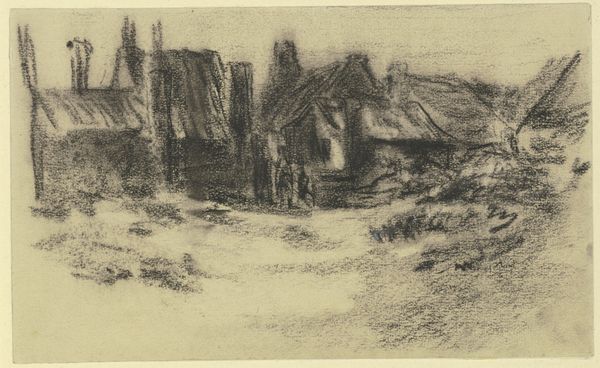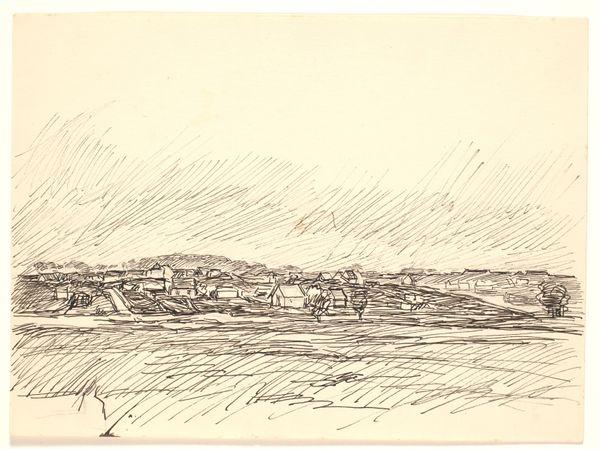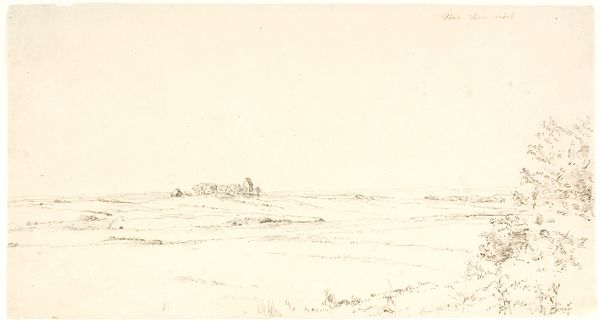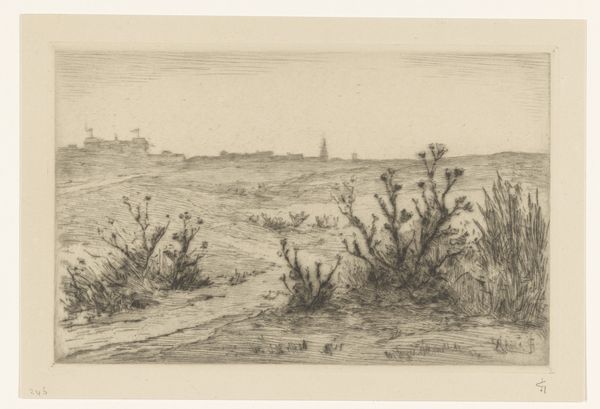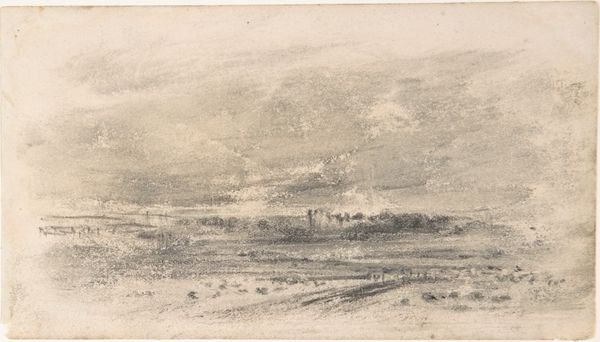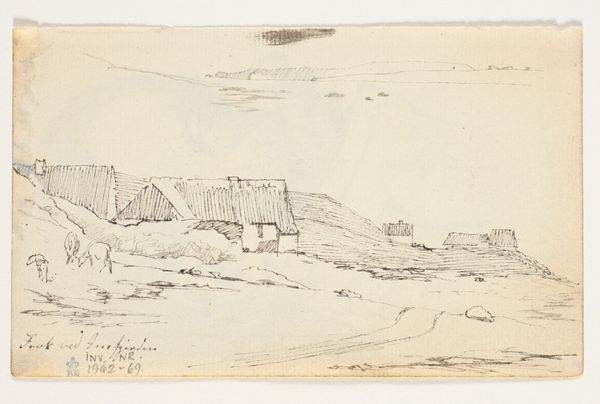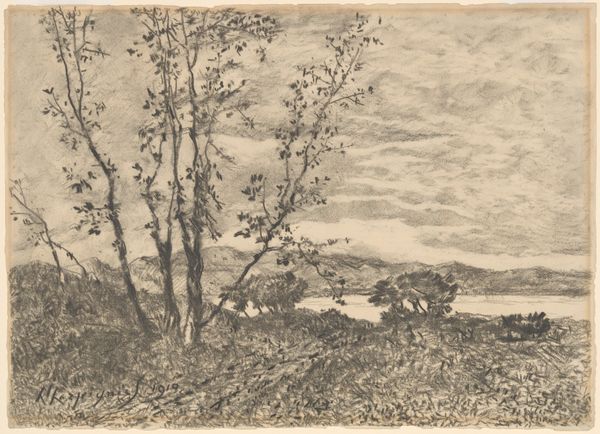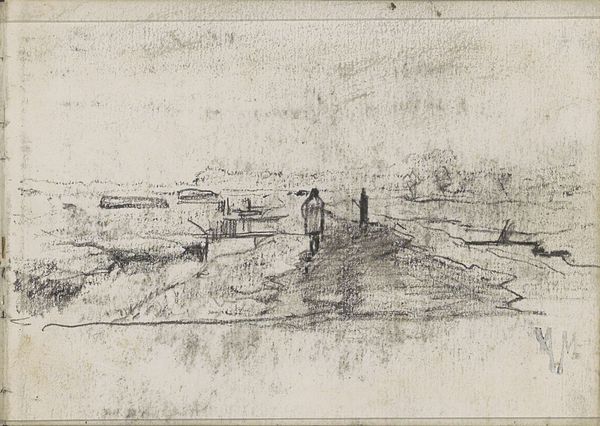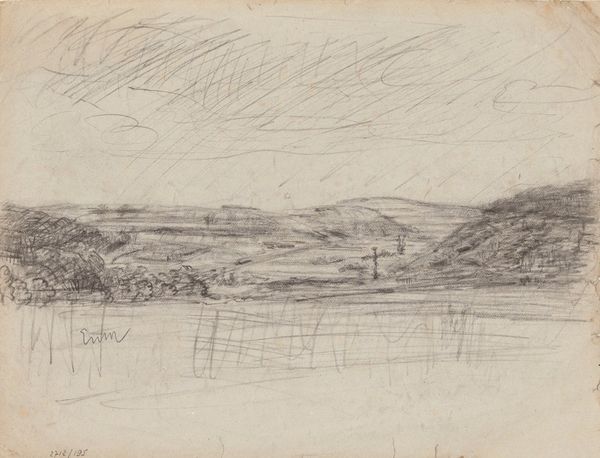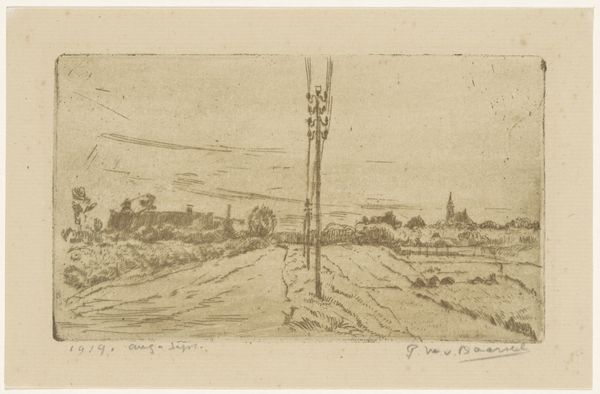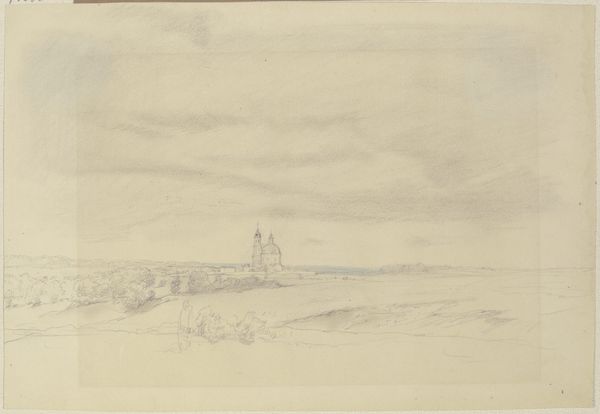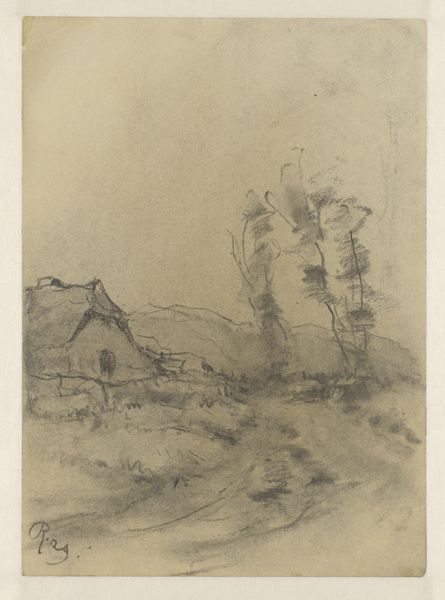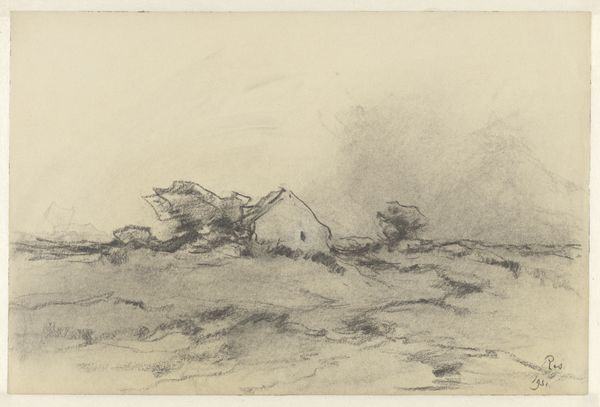![Monastery [recto] by John Singer Sargent](/_next/image?url=https%3A%2F%2Fd2w8kbdekdi1gv.cloudfront.net%2FeyJidWNrZXQiOiAiYXJ0ZXJhLWltYWdlcy1idWNrZXQiLCAia2V5IjogImFydHdvcmtzL2E2ZGU1OWMwLWI0NzEtNGM0Yi1hZDgzLTg4YzFkNTUxZWRjYy9hNmRlNTljMC1iNDcxLTRjNGItYWQ4My04OGMxZDU1MWVkY2NfZnVsbC5qcGciLCAiZWRpdHMiOiB7InJlc2l6ZSI6IHsid2lkdGgiOiAxOTIwLCAiaGVpZ2h0IjogMTkyMCwgImZpdCI6ICJpbnNpZGUifX19&w=3840&q=75)
drawing, pencil
#
drawing
#
landscape
#
pencil
#
realism
Dimensions: sheet: 9.53 × 14.29 cm (3 3/4 × 5 5/8 in.)
Copyright: National Gallery of Art: CC0 1.0
Editor: Here we have John Singer Sargent's pencil drawing, "Monastery," created between 1870 and 1872. It's a delicate sketch, almost hazy in its depiction of the landscape. The composition feels very traditional to me. What social narratives might be influencing the depiction of these monasteries? Curator: That’s a very insightful question. Nineteenth-century representations of monasteries often participate in a discourse about power, faith, and the evolving role of the church in society. Sargent’s work here invites consideration of landscape art as more than just scenic representation. Editor: Interesting. Can you elaborate on the sociopolitical context? Curator: Certainly. After periods of significant social upheaval, architectural structures like monasteries take on even greater weight. They become symbols deeply entwined with nostalgia and anxieties about social and religious transitions. Who would have seen the art when it was first created, and how did that influence its social effect? Editor: I guess this connects the church and aristocracy as protectors of social traditions at this moment? I had thought of it purely as a pretty landscape study before! Curator: Precisely. Understanding these nuances invites us to view Sargent’s landscapes through a historical lens. I encourage everyone to engage with visual art and question whose stories and power dynamics might be embedded within seemingly straightforward artwork. Editor: This reframes my understanding of the drawing. The visual is so subdued. It hides a deep story about politics in plain sight. Thank you! Curator: My pleasure. It shows you that the power of observation unlocks new depths to something that you see everyday.
Comments
No comments
Be the first to comment and join the conversation on the ultimate creative platform.
